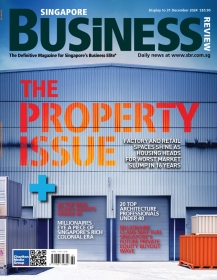
Chart of the Day: Here's how home, office price indices ride along SIBOR rates
They go on diverging paths.
According to Maybank Kim Eng, being an open economy, Singapore’s interest rate environment is highly influenced by global factors, and has a high correlation to the U.S.
Fed Funds rate’s direction. As the current zero-bound state cannot last forever, the inevitably higher interest rates will affect real estate as an asset class.
Here's more from Maybank Kim Eng:
In addition, Singapore has in recent years become stuck in a quagmire of slower economic growth even as land costs remain stubbornly high despite the many rounds of cooling measures targeting the residential segment.
Cap rates for commercial properties are likely to rise on the back of higher costs of borrowing. NAVs of landlords will therefore be negatively impacted as capital values fall, especially for the segments where there is little room for rents to grow, i.e. office and industrial.
The impact of higher interest rates on the residential market is a reduction in demand as affordability weakens, coupled with a much lower carry from rental income. Residential ASPs are likely to fall as a result, leading to lower profitability for many of the sites developers had acquired more recently.
























 Advertise
Advertise






